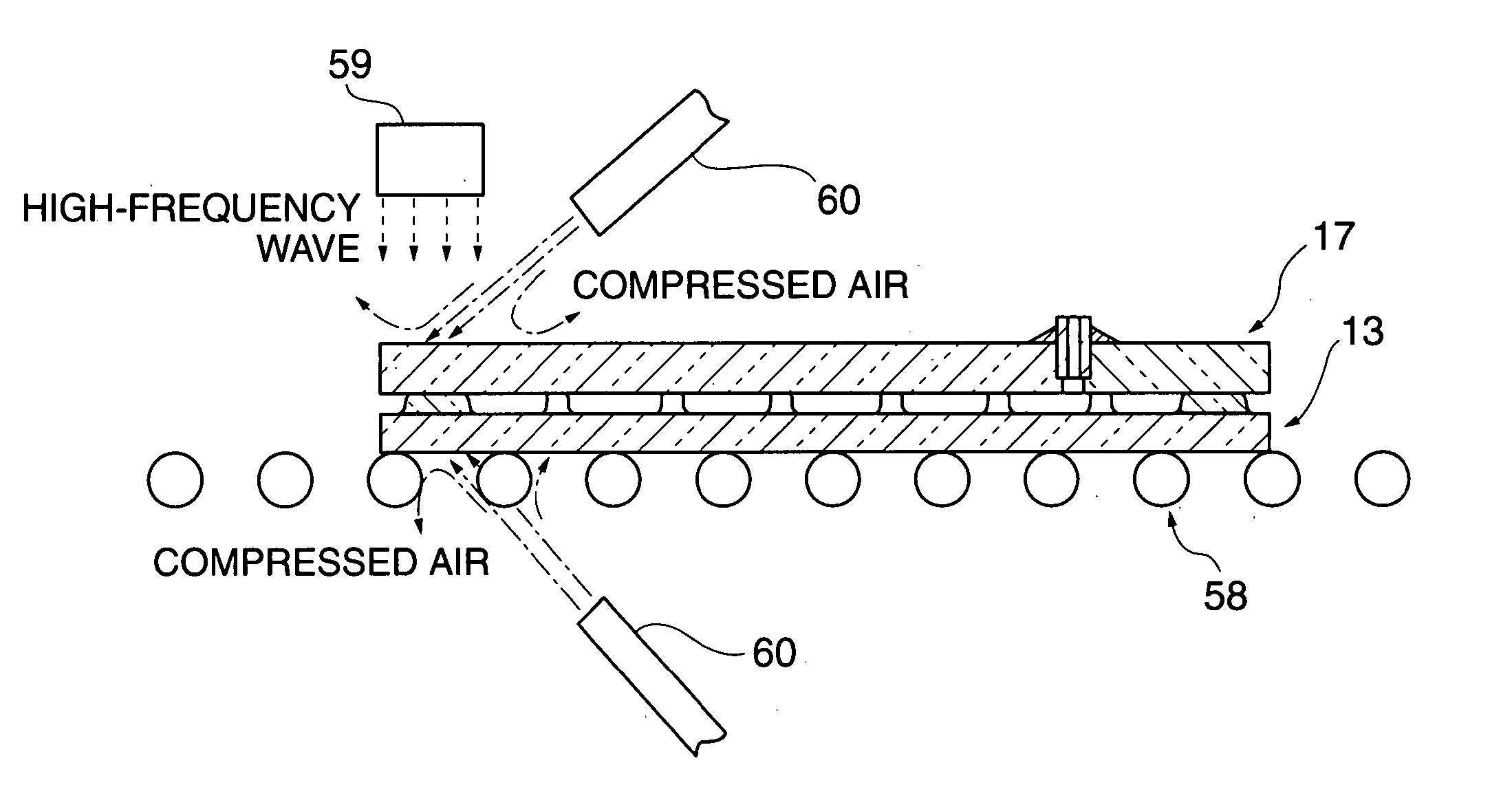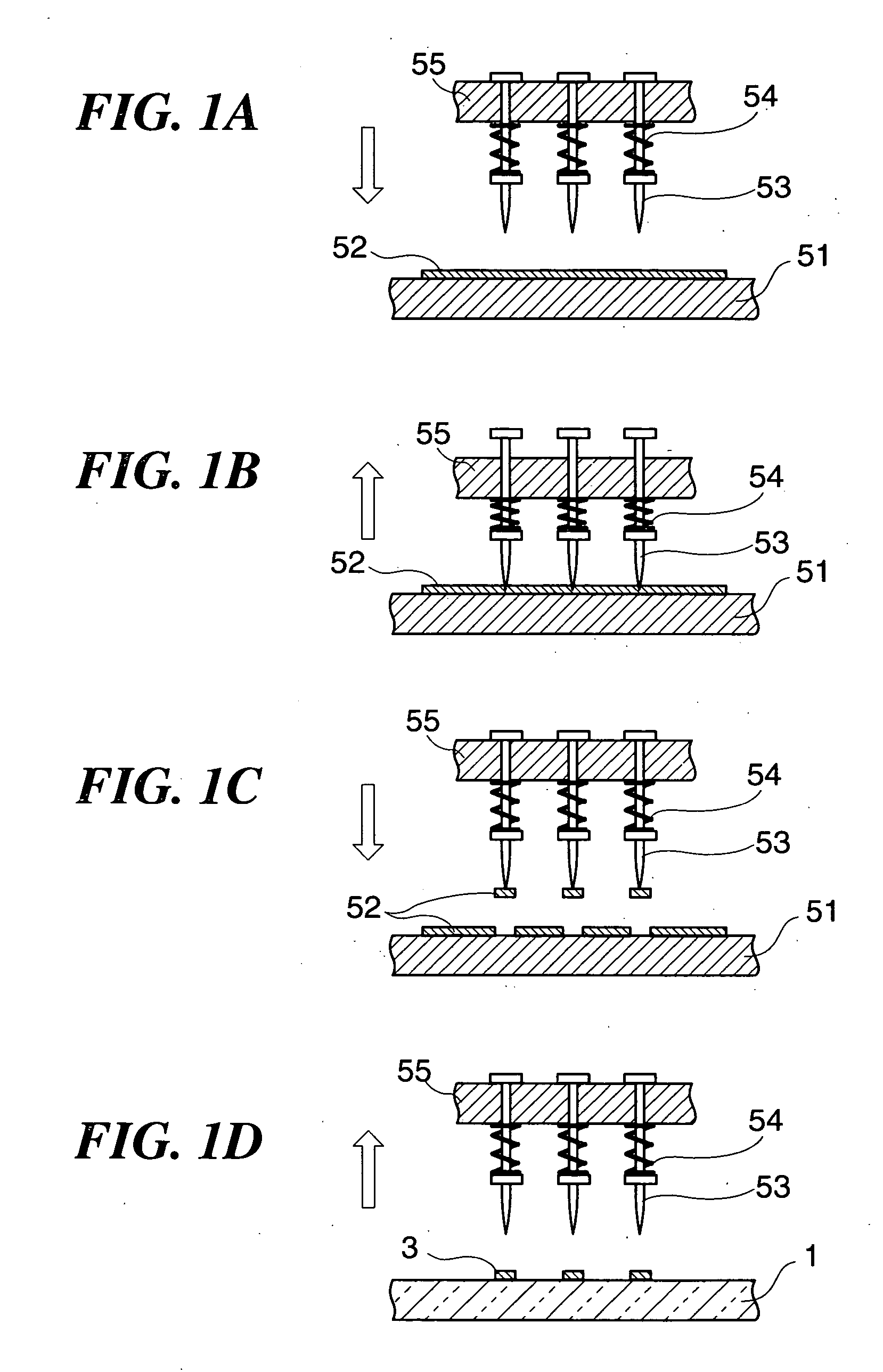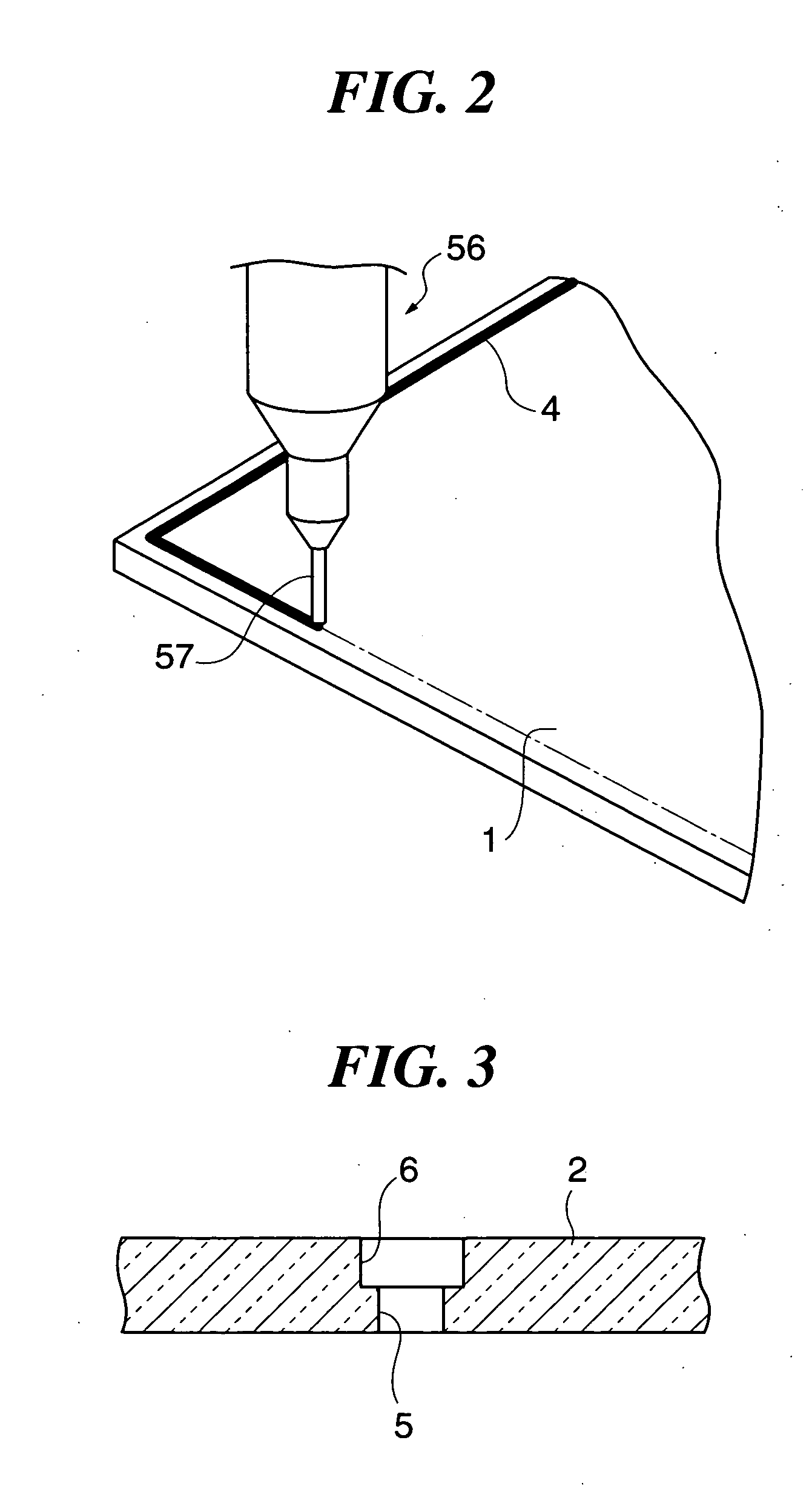Vacuum glass panel manufacturing method and vacuum glass panel manufactured by the manufacturing method
- Summary
- Abstract
- Description
- Claims
- Application Information
AI Technical Summary
Benefits of technology
Problems solved by technology
Method used
Image
Examples
Embodiment Construction
[0078] The present invention will now be described in detail with reference to the drawings showing an embodiment thereof.
[0079] First, two glass base plates, not shown, formed of soda-lime glass and having a predetermined thickness e.g. of 3 mm are each cut to a predetermined size e.g. of 1200 mm×900 mm, whereby a rectangular soda-lime glass plate 1 described in detail with reference to FIG. 5 and a rectangular soda-lime glass plate 2 described in detail with reference to FIGS. 6A and 6B, which are identical in shape and size to each other, are formed. Then, the edges of the respective glass plates 1 and 2 are polished so as to prevent fine glass powder from being generated during transfer in a tempering process, for tempering the glass plates 1 and 2 described in detail hereinafter.
[0080] Next, as shown in FIGS. 1A to 1D described in detail hereinafter, protrusions 3 are formed in a matrix shape on one surface (inner surface) of the glass plate 1, using glass paste containing lo...
PUM
| Property | Measurement | Unit |
|---|---|---|
| Temperature | aaaaa | aaaaa |
| Temperature | aaaaa | aaaaa |
| Strength | aaaaa | aaaaa |
Abstract
Description
Claims
Application Information
 Login to View More
Login to View More - R&D
- Intellectual Property
- Life Sciences
- Materials
- Tech Scout
- Unparalleled Data Quality
- Higher Quality Content
- 60% Fewer Hallucinations
Browse by: Latest US Patents, China's latest patents, Technical Efficacy Thesaurus, Application Domain, Technology Topic, Popular Technical Reports.
© 2025 PatSnap. All rights reserved.Legal|Privacy policy|Modern Slavery Act Transparency Statement|Sitemap|About US| Contact US: help@patsnap.com



